In a video clip, a hospital patient turns away in protest as a physician enters the room. “Why do you all keep coming in my room!” she asks in frustration.
The physician moves a chair out of the way and sits down at eye level with the patient. “You’ve had to see so many people,” he acknowledges.
“And I’m tired of it!” she yells. “I already know I have to get both of my legs cut off. That’s what they keep saying. I don’t have a choice!”
“You don’t feel like you have a choice,” he repeats back to her.
“I know I don’t! The doctors already said I don’t!” she retorts, relaying more of what they’ve told her. He listens patiently, acknowledging that the hospital’s doctors have said things about which she is angry.
Then he does something entirely unexpected. He asks the patient, “What could we do to make you feel safer?”
The patient and doctor are O’Nesha Cochran, who is a certified peer recovery mentor in Portland, OR, and Dr. Andy Seaman, an assistant professor at Oregon Health & Sciences University. The two are role-playing how they teach medical residents about the nuances of building trust with patients who have experienced childhood adversity. The interaction took place during an ACEs Connection webinar in May 2018. Cochran knows firsthand about the difficulties of building trust. When teaching medical residents, which she’ll be doing again with Seaman in the coming weeks, she gets right to that point.
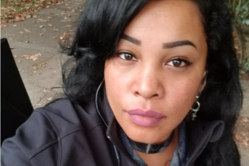
“My mom sold me to her tricks and her pimps from when I was three to the age of six,” she says. “I could remember these grown men molesting me and my sisters. I have three sisters and we all went through this.”
What Cochran’s background and role-play with Seaman show is that trauma-informed practice in the medical profession requires different knowledge and a new set of skills. Specifically, it requires these three critical components:
- awareness of how trauma from childhood and adulthood plays out in an individual’s life,
- that the relationship between a doctor and her patient is key to what keeps a patient healthy,
- that it takes time for a relationship to develop.
A recent study of the Women’s HIV Program at the University of California at San Francisco (UCSF) showed that the relationship that physicians build with their patients is key to their health. The study appeared in the June 2019 issue of the Journal of Women’s Health Issues.
Using a survey known as the Engagement Health Care Provider scale, patients were asked to rate their health care providers on 13 items such as “My health care provider listens to me,” “respects my choices,” “engages me in my care.” Patients selected a 1 for “always” to a 4 for “never,” with a lower score showing that patients have better relationships with their providers. Researchers found that among the 104 patients who participated in the study, “ratings of patient-provider relationship were very high, with a mean of 1.2,” according to the study.
Dr. Edward Machtinger, the director of the Women’s HIV Program, has seen clear evidence of how that trust has changed his day-to-day encounters with patients.
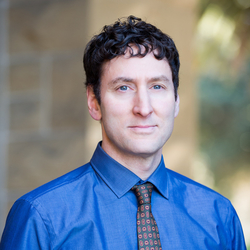
“The other day I had three patients in a row who openly discussed their crack cocaine use with me,” Machtinger says. “I see that as a huge victory and so exceptional, because crack cocaine use tends to be so stigmatized, because they’re ashamed, because nobody wants to be a crack cocaine addict. And there’s a ton of fear that we’ll punish them. We’ll take away their pain medicine, judge them and love them less, confirm their own shameful understanding of crack instead of seeing it as a way to cope, and a way to deal with impossibly difficult feelings that are a threat to them. The fact that there were three of them — and there are others — who were willing and felt safe enough to be open about their substance use, to me was an indication that we have changed the culture in our clinic significantly.”
Trauma looms large in the lives of those who participated in the study.Of 104 participants, 58 percent had ACE scores of 4 or more,and those patients with higher ACE scores were also more likely to have experienced a traumatic incident in the preceding month, according to the study.
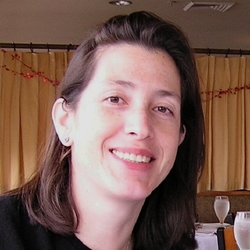
“I think this is one of the first times that people have measured ACEs among women living with HIV and shows trauma does not always start in adulthood, it often starts in childhood,” says Yvette Cuca, the lead author of the study, and a researcher and project director at the UCSF School of Nursing.
ACEs is a term that comes from a landmark study that showed how widespread childhood adversity is. The study known as the CDC-Kaiser Permanente Adverse Childhood Experience Study of more than 17,000 adults linked 10 types of childhood adversity — such as living with a parent who is mentally ill, has abused alcohol or is emotionally abusive — to the adult onset of chronic disease, mental illness, violence and being a victim of violence. Many other types of ACEs— including racism, bullying, a father being abused, and community violence — have been added to subsequent ACE surveys.
The ACE Study found that the higher someone’s ACE score — the more types of childhood adversity a person experienced — the higher their risk of social, economic, health and civic consequences. The study found that most people (64%) have at least one ACE; 12% of the population has an ACE score of 4 or higher. Having an ACE score of 4 nearly doubles the risk of heart disease and cancer. It increases the likelihood of becoming an alcoholic by 700 percent and the risk of attempted suicide by 1200 percent. (For more information about how this works and about the full complement of ACEs science, go to ACEs Science 101. To calculate your ACE and resilience scores, go to: Got Your ACE Score?)
Because of their realization that the relationships among patients, the clinic’s providers and staff are so central to healing, Machtinger and his fellow providers and staff were able to identify other, less visible issues that get in the way of healing for their patients. Front and center is social support, says Machtinger.
“I’ve become aware of how isolated [my patients] are, how common it is for them not to leave their places for days,” he says. “I had a patient say to me: ‘I have friends on television and I have friends here.’ This patient has the TV on all of the time and she never leaves her apartment because her neighborhood is chaotic, because it is dangerous…and it’s startling how many of my patients are that isolated.”
Even if they don’t have an appointment, patients often come to the clinic for a meal, to engage with other patients and get services, explains Machtinger. “That opportunity to leave their home and come some place where they feel safe and accepted is one of the most basic aspects of their care, and one of the most powerful,” he says. ”It’s the connection and the attachment that is going to be the solution. Most of health care is looking at something that is completely different than what I think is necessary and what we have to offer.”
It took time for patients at the clinic to feel comfortable opening up to their doctors. In 2017, the clinic’s healthcare providers wondered how to ask patients about substance use without stigmatizing them. “They said: ‘We don't want you to ask us about our substance use,’” recalls Machtinger. “That was hard to hear. We really felt like we needed to ask about substance use, because in many circumstances it was obviously killing the person.”
But, says Machtinger, further conversations with patients revealed that they didn’t mind being asked about it. “They just wanted to be asked about it in a conversational way,” he says, “without judgment by a provider they trusted, not while they were being checked in.” (For more on how the clinic began transforming into a trauma-informed clinic, see this story, and another one here.)
And getting feedback from patients brings up another point that Machtinger and others stress as central to any effective trauma-informed practice — asking patients for their input in what a trauma-informed practice should look like and include them in the process of shaping how it works. At the Women’s HIV Program, for example, patients representatives participate in ongoing clinic-wide decisions about the clinic’s trauma-informed practices, according to Machtinger.
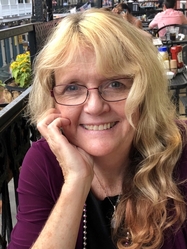
Robyn Robbins, who has been a family representative for the Pediatric Campus at Santa Rosa Community Health Clinics for 12 years, agrees that the patient voice is at the heart of what makes a trauma-informed approach work. “My first suggestion is always ask families what they need and listen to the answer and have them involved in every decision-making change, every creative part of the policy or practice, or systems change that you’re working on,” says Robbins, who now speaks nationally as a constituent consultant for the Casey Foundation. (For more information about the Pediatric Campus read this story about their trauma-informed practices journey.)
Dr. Priscilla Dass-Brailsford agrees that involving patients in decision-making is central to medical practice. And as part of relationship-building to address the fallout from trauma, she worked for years on the other side of that relationship educating doctors to reconsider their assumptions.
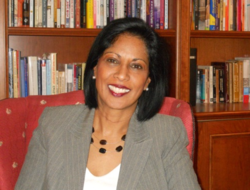
“As a trainer, I trained physicians about trauma and how trauma destroys trust and relationships, so expecting a patient to believe and trust you in a first meeting is likely not going to happen,” says Dass-Brailsford, a professor of psychiatry at Georgetown University Medical School in the Center for Trauma and the Community.
Dass-Brailsford made that point to resident physicians she and colleagues trained at Georgetown, Johns Hopkins School of Public Health, Howard University and Providence Hospital in 2009 to examine the feasibility of trauma training. The training included six sessions focusing on four ingredients for building trust between provider and patient. These ingredients are mutual respect, information sharing, connection, and hope — all elements of the Risking Connections curriculum developed by the Connecticut-based Traumatic Stress Institute.
The reason for the training and research about it, explains Dass-Brailsford, was that patients — especially women — were not showing up for appointments. “The idea for the training was to teach physicians how to be more valuing of patients and more attentive to the possibility that they might have a trauma history,” she says.
But documenting how building trust and improving relationships by teaching and learning trauma-informed practices may be nuanced so that it’s not easily captured by data alone. That was one of the realizations Dr. Robert Whitaker and colleagues had when they were gauging the impact of training pre-school teachers about trauma, trauma triggers, ACEs and how to de-escalate a child who has been triggered. Ninety-three teachers who teach 3- and 4-year-old preschoolers in the Philadelphia School District participated in the study that appeared in the Journal of the American Medical Association.
Half of the teachers received the 15-hour, 12-week trauma training entitled Enhancing Trauma Awareness and half were put into a comparison group that did not receive the training.Based on scores of the teachers who were surveyed to capture their perceptions of conflict that existed with the preschoolers, there were no significant differences before and after the training,

However, focus groups among the teachers and trainers revealed an entirely different picture, says Whitaker. “As you read through the teachers’ testimonies about the transformation of their inner experience of the course, it was very evident to us that the qualitative findings showed a significant impact on the quality of teacher-children relationships,” he says.
In particular, says Whitaker, the teachers showed how they could remain calm to help soothe a child who is triggered and that the training had entirely altered their perceptions of what the children were experiencing.
“How it has changed for me is, you always hear the statement ‘You never know how someone is until you walk a mile in their shoes’ and I feel like there is a lot of truth to that because if you can learn how to retrain your mind to think of how somebody else might be feeling, it helps you maybe not to approach that person in a negative way,” wrote one of the teachers.
“If we had just done questionnaires, we would have certainly missed a powerful effect that was going on from the intervention that I think would have slowed progress in the field,” said Whitaker. “If people wish to do relationship-transforming interventions, they should do qualitative assessments to get at the shifts in people’s perspectives, beliefs, and behaviors,” he said.
The point about empathy is also something that peer mentor O’Nesha Cochran tries to convey when training medical residents about trauma.
“The [residents] have to find a time in their lives where they have felt so desperate that they would do anything to get what they wanted,” Cochran suggests. “And if they have felt that desperate, then multiply that by a thousand and imagine that’s how you lived every day of your life.”







Comments (0)